ERTC Fast Program™
Employee Retention Tax Credit
Employers With Businesses Financially Impacted By COVID-19 Are Eligible For Up To $26,000 Per Employee. With Guidance From Experts Like Us, That Employer Could Be You.
IMPORTANT REMINDER: Even if you got both PPP Loans... businesses are STILL qualifying and receiving sizable ERTC refunds. Apply Today!
ERTC Fast Program™
Employee Retention Tax Credit
Employers With Businesses Financially Impacted By COVID-19 Are Eligible For Up To $26,000 Per Employee. With Guidance From Experts Like Us, That Employer Could Be You.
IMPORTANT REMINDER: Even if you got both PPP Loans... businesses are STILL qualifying and receiving sizable ERTC refunds. Apply Today!
The Employee Retention Tax Credit
Maximizing Your Claims For Keeping Americans Employed
The government has authorized unprecedented stimulus, and yet billions of dollars will go unclaimed.

The ERTC was established by the Coronavirus Aid,
Relief, and Economic Security (CARES) Act, and
provides a credit to business owners based on
qualified employee wages and health plan
expenses paid after March 12, 2020 and before Oct
1st, 2021.
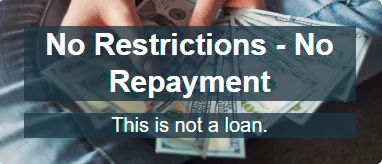
While the ERTC was created in the CARES act along
with the PPP Loans - this is not a loan, there is no
repayment. There are no restrictions for what
recipients of the credit must use the funds.
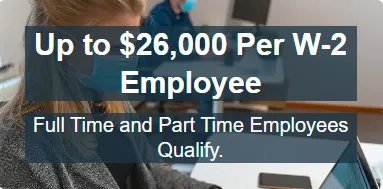
The ERTC program is a refundable tax credit for
business owners in 2020 and 2021. In 2020, a credit
is available up to $5,000 per employee from 3/12/20-
12/31/20 by an eligible employer. That is a potential of
up to $5,000 per employee. In 2021 the ERC
increased to $7,000 paid per employee per quarter for
Q1, Q2, and Q3. That is a potential of up to $26,000
per employee.
Start-up businesses who began operations after
February 15, 2020 can take a credit of up to $50,000
in both the third and fourth quarters of 2021 for a
maximum credit of $100,000.
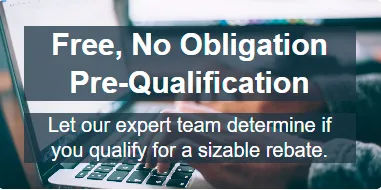
By answering a few, simple, non-invasive questions
our team of ERTC experts can determine if you likely
qualify for a no-strings-attached tax credit. There is no
cost or obligation to be pre-qualified.
The Employee Retention Tax Credit
Maximizing Your Claims For Keeping Americans Employed
The government has authorized unprecedented stimulus, and yet billions of dollars will go unclaimed.

The ERTC was established by the Coronavirus Aid,
Relief, and Economic Security (CARES) Act, and
provides a credit to business owners based on
qualified employee wages and health plan
expenses paid after March 12, 2020 and before Oct
1st, 2021.

While the ERTC was created in the CARES act along
with the PPP Loans - this is not a loan, there is no
repayment. There are no restrictions for what
recipients of the credit must use the funds.

The ERTC program is a refundable tax credit for
business owners in 2020 and 2021. In 2020, a credit
is available up to $5,000 per employee from 3/12/20-
12/31/20 by an eligible employer. That is a potential of
up to $5,000 per employee. In 2021 the ERC
increased to $7,000 paid per employee per quarter for
Q1, Q2, and Q3. That is a potential of up to $26,000
per employee.
Start-up businesses who began operations after
February 15, 2020 can take a credit of up to $50,000
in both the third and fourth quarters of 2021 for a
maximum credit of $100,000.

By answering a few, simple, non-invasive questions
our team of ERTC experts can determine if you likely
qualify for a no-strings-attached tax credit. There is no
cost or obligation to be pre-qualified.
Why Choose ERTC Fast Program™?
White Glove Service With ONE PERSON Right Until You Get The Check From The IRS
We Are Not A "Pop-up Shop" These Means We Have Been In Business Many Years
No Upfront Fees To Get Qualified - 100% Contingent On Your Refund - Most Competitive rates in industry
Audit-Proof Documentation For IRS Support - Support In Case of Audit
We Sign Your 941x - this means we are putting our name and license on the paperwork.
We specialize in maximizing Employee Retention Tax Credits for small business owners like you. You won’t find us preparing income taxes, compiling financial statements, or providing attestation services of any kind.
When you engage us, rest assured that you’ve hired the best CPA Firm to lock in this one-time opportunity for a large refund check from the IRS.
If You Want To Call The IRS
IMPORTANT: We have found sometimes the IRS will not give you much, or even worse incorrect information. It seems the quality of information you get really depends on the agent that answers the phone. If you worked with us, according to our records the IRS has your files!
If you dont like the answer you get, call back. It has happened many times where clients get a different answer depending on the agent.
Here are the steps to call the IRS
Call 1-800-829-1040
Follow the prompts and select in this order
3, then wait for next prompt
2, then wait for next prompt
3
You Must wait until you hear the next prompt to select it.
After the last prompt you will be taken to a queue, yes the wait time is probably long.
You will need your business tax ID
You will also be asked information to verify who you are.
Here are the statuses the IRS can provide you (to best of our knowledge)
File Received - it made it to IRS and they have acknowledged it is there.
In Processing - this is a "black hole" and your file can sit there for many months. They won't give more details.
Approved - your file has been approved.
Checks mailed - they have mailed your checks. Start watching for them in your mailbox. Unfortunately checks do get lost. If you don't get them in 4 weeks let us know.
Announcement!
If You Have 25 Or More W2 Employees - Read Below
We have an exciting new program you might be interested that literally costs you ZERO. Read below for more details:
Saves 18-30% On Workers Compensation Premiums.
Reduce Annual FICA Taxes By Up To $879 Per Employee Annually.
Ability to Decrease Employee and Employer Medical Expenses.
Guaranteed Universal Life Insurance For Employees.
Enhanced Medical Care Program For Employees & Their Families. On Top Of Existing Plans.
Attract & Retain "A" Players With More Competitive Compensation Package.
No Out Of Pocket Costs To Employer or Employee Ever!
No Risk or Obligation, Big Upside Potential.
And Much More.......
Phone Number: (360) 317-2108
Address: 3571 Far West Blvd
Austin, TX 78731
© 2022 ERTC Fast Program™. All Rights Reserved
The information contained herein is the property of ERTC Fast Program ™, which reserves all rights thereto. Redistribution of any part of this information is prohibited without the express written consent of ERTC Fast Program ™. ERTC Fast Program ™ is not responsible for any errors in or omissions to this information, or for any consequences that may result from the use of this information.

• Business Consulting Firm in Newport Beach, California, 19 W-2 Employees; $44,960 Credit

• Presentation Design Agency in Nashville, TN, 19 W-2 Employees; $162,979 Credit

• Restaurant Ownership Group in Florida, 224 W-2 Employees; $1,120,000 Credit

• Restaurant in Houston, Texas, 80 W-2 Employees; $400,000 Credit

• Montessori School in Addison, Illinois, 35 W-2 Employees; $175,000 Credit
• Single location Steakhouse $213,029.88
• Temp Staffing Company $259,099.46
• Hair Salon $107,792.22
• Multi-location Sandwich Shop $371,551.39
• Single location Pizza $58,255.25
• Toilet Manufacturer $252,104.88
• Church $30,782.22
• Gym $51,455.01
• Four Location Hotel $620,416.97
• Home Health Staffing Services $599,891.59
• Nutrition Products US Distributor $1,152,330.98
• General Contractor $364,283.71
• 4-location Restaurant $528,340.02
• Field Examinations $324,846.66
• Marketing Graphics $50,954.46
•Commercial Cleaning Owner $80,394.16
• ESL School $111,150.41
• Local Restaurant $528,340.02
• HVAC Contractor $39,262.33
• Environmental Engineer $21,000.00
• Marketing Agency $50,954.46
• 4 location Mexican Restaurant $2,014,000.00
• Dental Practice $125,867.34
• Automotive Car Dealership $406,798.25
• Non-Profit Organization $359,923.65
HOW DOES THE PROCESS WORK?
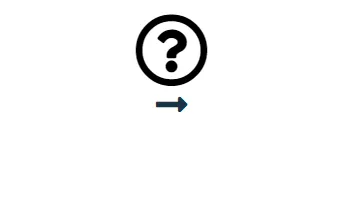
Complete the Questionnaire
Start with the 10 simple questions on this site to begin
your claim. We will email you a secure link to an
application questionnaire to be completed online.
Upload Data
Upload your 941 returns, PPP loan documents, and raw payroll data on our secure portal.


Credit Calculation
We calculate the credit you can receive from the IRS.
Application Package
We will prepare and help you file the 941-X Amended payroll returns.


Get Paid
The IRS will process your credit and mail you a check.
Begin Your Claim
Ten Simple Questions
Take advantage of this new COVID-19 employee
retention credit while it’s available. If your business has been affected by the pandemic you will qualify.
Secure Submission
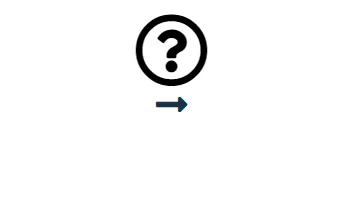
Complete the Questionnaire
Start with the 10 simple questions on this site to begin
your claim. We will email you a secure link to an
application questionnaire to be completed online.

Upload Data
Upload your 941 returns, PPP loan documents, and raw payroll data on our secure portal.

Credit Calculation
We calculate the credit you can receive from the IRS.

Application Package
We will prepare and help you file the 941-X Amended payroll returns.

Get Paid
The IRS will process your credit and mail you a check.
Begin Your Claim
Ten Simple Questions
Take advantage of this new COVID-19 employee
retention credit while it’s available. If your business has been affected by the pandemic you will qualify.
Secure Submission
FAQs
Begin Your Claim - Answer
10 Questions
Your time investment will be under 15 minutes – guaranteed.
And could be worth tens of thousands in free money.
Phone Number: (360) 317-2108
Address: 3571 Far West Blvd
Austin, TX 78731
© 2022 ERTC Fast Program™. All Rights Reserved
The information contained herein is the property of ERTC Fast Program ™, which reserves all rights thereto. Redistribution of any part of this information is prohibited without the express written consent of ERTC Fast Program ™. ERTC Fast Program ™ is not responsible for any errors in or omissions to this information, or for any consequences that may result from the use of this information.

